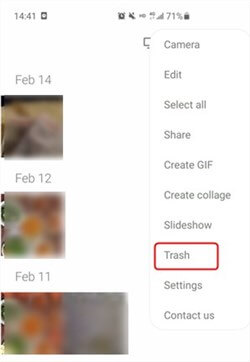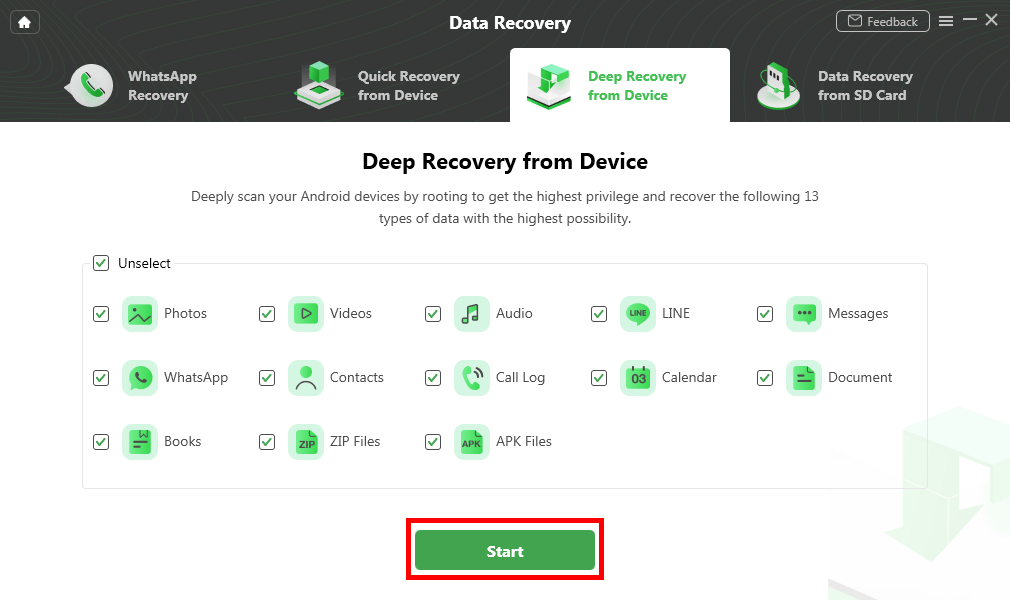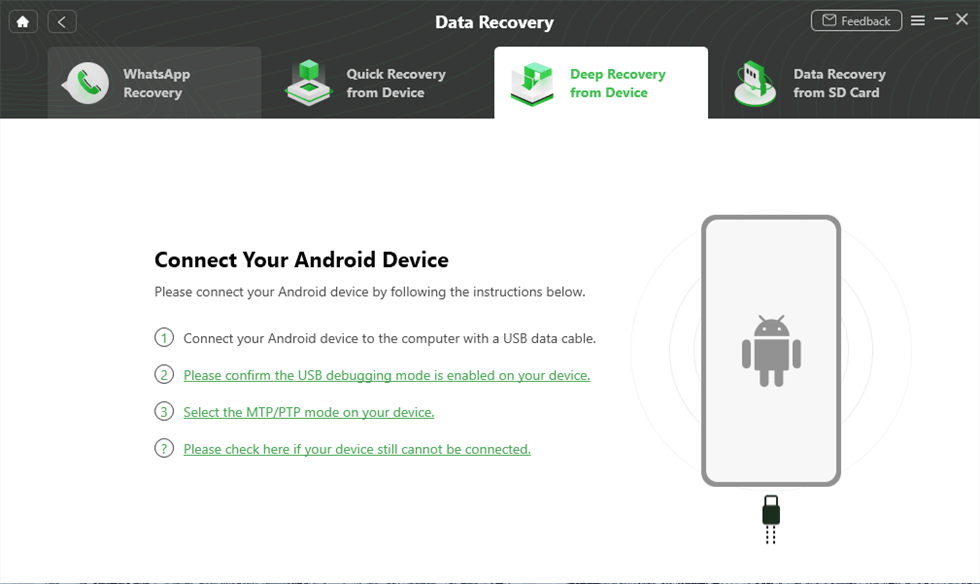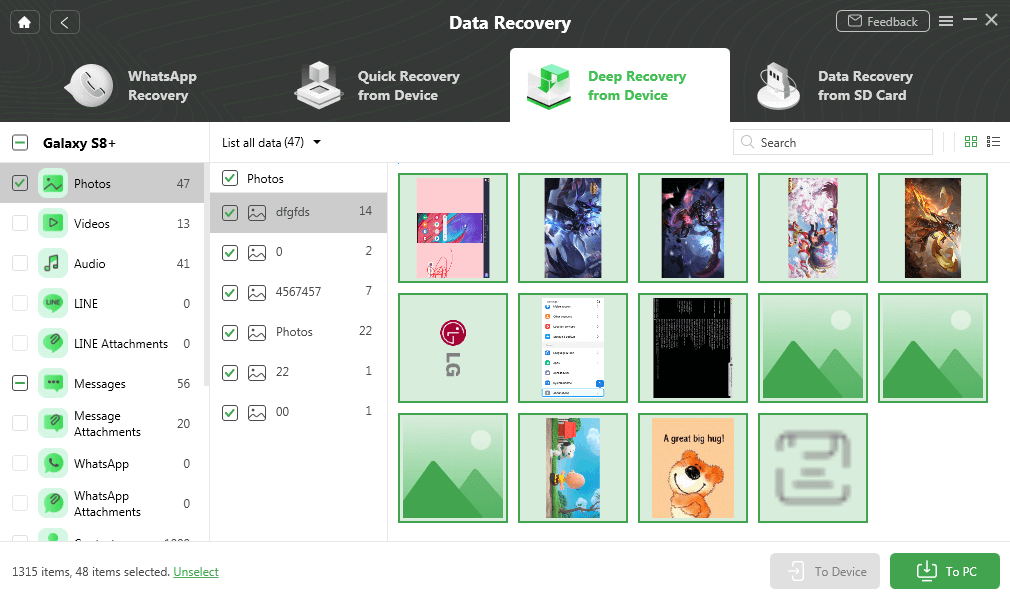3 Ways to Recover Deleted Photos from Android Internal Storage
Some pictures are missing from the gallery, and you haven’t any idea how to recover deleted photos from Android internal storage? Can you recover deleted files on Android internal memory? Continue reading to learn how to recover deleted photos in no time quickly.
Smartphones allow us to capture the most memorable moments in our lives conveniently, but there are implications to saving our memories on mobile devices, one of which is data loss. You’re probably wondering if there’s a way to recover deleted photos android internal storage if you’ve mistakenly erased photos from your mobile device or wiped its memory clear. Don’t worry, the deleted data is still in the Android phone and you can’t see them, you can recover the deleted photos on Android internal memory.
This post will teach you numerous methods for recovering deleted images on Android so you can choose the one that works best for you.
Also Read: Text Messages Disappeared on Android Phone? Here are Fixes >
How Do I Recover Deleted Photos from Android Internal Memory?
Like most Android users, you’re probably utilizing a cloud storage service to back up your images. If it’s the case, you are in luck since there is no quicker way to recover deleted images on Android. But what if you don’t have a backup and are looking for more straightforward ways to recover deleted photos from Android internal storage. Then scroll below to know how you can do it in no time.
Method 1. Using Google Photos backup
Google Photos is a well-known photo-sharing and storage tool created by Google. The app can securely backup and restore all photographs stored on your Android smartphone to the cloud. It can also automatically delete backed-up pictures, which causes some users to fear they are unfamiliar with this capability. But don’t worry, restoring images from Google Photos is an easy process.
Just have a quick glance at the below steps on how to recover photos from Android Phone Memory Using Google Photos:
Step 1: First, sign in to “Google Photos” on your Android phone using your Google account. Then you’ll get into Google Photos.
Step 2: Then, on the left “Menu” icon, select the “Trash” option. You can see the deleted photos if you tap on it.
Step 3: You can pick the deleted photos after previewing them. Finally, click the “Recover” button, and the deleted images will be retrieved from the trash bin.

Recover Deleted Photos on Android with Google Photos App
Method 2. From the Recycle Bin of your Android phone
The second option for recovering deleted images is to use a recycling bin. Some Android phones include a recycle bin that stores recently deleted photos. If your phone has a recycle bin, then follow the steps below to restore it.
Step 1: Unlock your device and then open the “Gallery App” on your device.
Step 2: Once you are in the “Gallery App,” click on “Three Dots.”
Step 3: Now hit on “Recycle Bin/Trash.”
Step 4: Finally, select all the photos you want and then click on “Restore,” and you are done!

Recover Deleted Photos from Recycle Bin
Method 3. Recover Deleted Photos from Android Internal Storage by DroidKit
When photos are deleted from the Android gallery, the photos will be saved in their internal memory before they’re overwritten by newly generated data. How can I recover permanently deleted photos from Android internal storage? To find these deleted and hidden photos, you just need a powerful photos recovery tool to dig out the deleted photos from your phone memory.
DroidKit is a full-way Android solution that helps you recover lost Android data, fix all Photos that disappeared from Android, fix Android system issues, and unlock your Android Phone. With DroidKit, now you can easily find and recover deleted photos from your Android Gallery. Check its main features on Android data recovery:
DroidKit – Android Data Recovery
- Recover 13 types of data including messages, contacts, WhatsApp, etc.
- Quickly scan and find the deleted data on the Android without root.
- Recover lost files from your Android with the highest-ever success rate.
- Preview and select the lost data you want to recover as you need.
Free Download100% Clean & Safe
Free Download100% Clean & Safe
Free Download * 100% Clean & Safe
Here is how to recover photos from your Android internal storage with DroidKit Deep Recovery Mode:
Step 1. Download the latest version of DroidKit on your computer and connect with your Android Phone. Choose Deep Recovery from Device.

Choose Deep Recovery from Device under Data Recovery
Step 2. Select Photos to scan deeply from your Android phone.

Select the Data Type You Need to Recover
Step 3. Make sure you’ve connected your Android phone, and click Start. DroidKit will start checking the root status of your device. To finish Deep Recovery, it is necessary to root the device first.

Connect Your Android Device to the Computer
Step 4. If your Android Phone is unrooted, please click the “Root Now” button. After rooting your device, DroidKit will start scanning your Android phone to find the deleted photos.

Tap on Root Now to Continue
Step 5. Choose the photos you want to recover to your Android gallery, and click the To Device button.

Select Android Photos to Recover
Q&A
1. What is Android Internal Storage?
Internal storage on Android refers to the storage of private data on the device’s memory. By default, saving and loading files to internal storage are private to the application and are not accessible to other apps. When a user uninstalls an application, the accompanying internal stored files are also erased. However, it should be noted that some Android users root their phones, acquiring superuser access. These users will have the ability to read and write any files they want.
2. Are permanently deleted photos gone forever?
If you have backup and sync enabled, photos and videos you delete will remain in your trash for 60 days before being permanently erased. If you have passed the 60 days, they are deleted permanently, and you might need to use a third-party tool to recover.
3. Can you recover permanently deleted photos from Android?
You certainly can. Whether or not you have a backup, there are ways to retrieve deleted images from an Android phone.
First, there is a built-in solution on your Android phone that allows you to recover the images you mistakenly erased. Even if you have permanently erased photos from your smartphone, there are still viable options for recovering your valuable data.
4. Is there a Recycle Bin on Android?
While specific custom versions of Android and third-party file browsers and gallery apps have a recycle bin, Android smartphones running the stock version of the Android operating system do not. To avoid losing essential images, Android users can enable automatic cloud backups in Google Photos.
5. Where are deleted photos stored on Android?
Deleted images on Android are not saved in a specific folder. To find out where they went, do the following:
- Navigate to your preferred search engine.
- Enter the make and model of your smartphone, as well as recycle bin or garbage, in the search bar.
- Examine the results to see if you can locate any helpful information.
If you can’t locate anything relevant, it’s likely that your Android device just removes deleted images.
The Bottom Line
To summarise, if you want to recover recently deleted images on Android, head to the Gallery app, and you’ll have them back in seconds. If you wish to retrieve permanently lost photos from your Android phone, you may need to use DroidKit!
More Related Articles
Product-related questions? Contact Our Support Team to Get Quick Solution >

